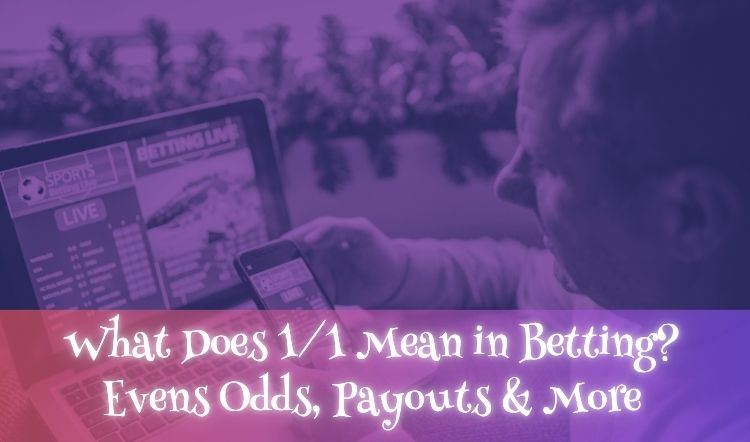
Odds are a central part of betting, and “1/1” is one of the most familiar formats you might see. At first glance, it can look a bit technical, but the concept is actually quite simple once you start to break it down.
This blog post explores what 1/1, sometimes called “evens”, represents, how potential returns are calculated, and where you are most likely to encounter these odds across sports. We also touch on how bookmakers work out evens in the first place.
Read on to understand the topic step by step.
Why 1/1 Odds Are Called Evens
1/1 odds are often referred to as “evens”. In basic terms, it means the potential gain is roughly the same as the amount staked. For example, if you choose to place a bet at 1/1, a win would return about the same amount as the money you put down.
The phrase “evens” reflects this simple one-to-one relationship. If you prefer other formats, it is equivalent to 2.00 in decimal odds and +100 in American odds.
Because the maths is straightforward, evens is sometimes used as a benchmark when looking at other odds. Later, we will see how this plays out in different types of sports markets.
How Do 1/1 Odds Work in Sports Betting?
In sports contexts, evens roughly means that any gain from a winning bet mirrors the stake you place. For example, if you were hypothetically betting £1 at evens, a win would add around £1, plus the initial stake.
You may notice evens offered on a football match, a team qualifying, or lines such as goals or cards that appear closely balanced. In horse racing, a horse priced at evens is generally seen as fairly prominent among its competitors, though not overwhelmingly dominant.
Markets shift as fresh information appears. News about teams, recent form, weather conditions, or betting activity might make a selection move closer to or further from evens.
This sets the stage for understanding what a 1/1 bet might pay back if it were successful.
What Does a 1/1 Bet Payout Look Like?
A 1/1 bet hypothetically returns the stake plus the same amount again if it wins. So, if you placed a £10 bet at evens and it were to win, the total would be around £20. A £5 stake would roughly double to £10, and £25 would return about £50.
Most betting platforms show both the profit and the total return clearly, so you can see how the numbers add up. If you are placing multiple bets, a leg priced at evens doubles the accumulated total at that stage if it were to succeed.
Later, we’ll show a simple calculation method for quickly working out potential returns from evens.
How Do You Calculate Returns From 1/1 Odds?
The calculation for 1/1 is very straightforward: the total potential payout is approximately double the stake.
Stake x 2 = Potential payout
So, a £8 stake could give about £16, £12 could give £24, and so on. This total includes both the amount placed and the potential gain.
If you are choosing stakes for bets, it is sensible to consider how much you might set aside and track any amounts used for betting. Keeping an eye on spending is always a good idea.
Are 1/1 Odds Common in Football and Horse Racing?
Evens appears regularly in both football and horse racing. In football, you might find it when two sides appear evenly matched, or on balanced lines such as over or under a certain number of goals. Occasionally, player or team specials land around evens when data suggests neither side is heavily favoured.
In horse racing, evens often shows up when a runner is prominent without being a clear standout favourite. A horse might drift to evens if support builds, or move away if conditions or the market shifts.
Since prices react to updates and betting activity, the same fixture or race might show different numbers over the day. This brings us to how bookmakers arrive at evens in the first place.
How Do Bookmakers Set 1/1 Odds?
Bookmakers calculate evens by assessing performance data, recent results, form, injuries, ground or weather, and likely market reactions. Their systems estimate the probability of each outcome and then translate that into odds.
An additional factor is the margin built across a market, which ensures a slight edge for the bookmaker. As information develops and bets are placed, prices adjust to reflect changing expectations. That’s why evens at one bookmaker could be 21/20 or 10/11 at another.
Understanding evens can help you read a market quickly and estimate potential returns if you choose to place a bet. If you are betting, it is important to set an amount that suits you and consider tools such as deposit limits to help maintain oversight of spending.
**The information provided in this blog is intended for educational purposes and should not be construed as betting advice or a guarantee of success. Always gamble responsibly.
